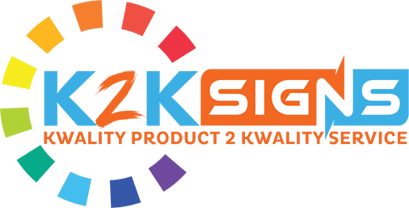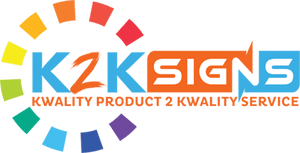Creating Safer School Zones with Clear, Compliant Signage
Installing compliant school signs helps reduce accidents, improve driver behaviour, and protect children in high-traffic school zones.
What Are School Zone Signs?
School zone signs are safety signs placed near schools to alert drivers to reduce speed and be cautious.
These signs protect children crossing roads, entering school zones, or playing nearby. They’re part of Australia's legal safety infrastructure under AS 1742.2 and are crucial during peak times like drop-off and pick-up.

Why are these signs important for school safety?
School signs are important for school safety because they slow down traffic, alert drivers to child activity, and reduce the risk of accidents near crossings, bus zones, and playgrounds.
- Reduce driver speed in child-dense areas
- Highlight pedestrian and zebra crossings
- Mark drop-off/pick-up bays for smoother traffic flow
- Visually signal child zones like playgrounds and bus stops
- Help drivers anticipate sudden pedestrian movement
What Types of Children and School Signs Are Used in Australia?
Australia uses standardised signs like 40km/h speed limits, pedestrian alerts, and bus zone markers to manage school zone traffic.
Below are the most common school and child safety signs in Australia:
SCHOOL ZONE 40 – Reduced speed zones during school hours
NO STOPPING DURING SCHOOL HOURS – Clearways near school entries
SCHOOL BUS AHEAD – Warning signs near loading zones
PEDESTRIAN and PLAYGROUND signs – Indicate child activity zones
Slow Down – Kids Playing / Watch for Children – Speed calming signs
Mother & Child Symbol – Reflective vehicle signs on school buses
Children Must Be Supervised – Safety signs in play areas
No Smoking Within 10 Metres – Mandatory signage under VIC Tobacco Laws
Look Both Ways / Drive Carefully swing signs – Portable driveway caution
All signage must be made with reflective material and installed according to AS 1742.2: visibility, legibility, angle, and height matter.
Where Should Child Safety Signs Be Installed?
Child safety signs should be installed at high-risk locations where children walk, cross, play, or wait.
Strategic placement reduces risk and ensures driver visibility:
- School entrances and exits
- Pedestrian or zebra crossings
- Bus stops and car pick-up/drop-off bays
- Parks and playgrounds near school boundaries
- Shared access roads and laneways used by students
Installation must follow council placement rules and road authority mapping. K2K Signs ensures correct alignment with compliance maps and reflectivity standards.
How Do School Signs Help Reduce Accidents?
School signs reduce accidents by influencing driver behaviour and creating predictable movement in high-risk zones.
When signs are clearly visible and used consistently, they:
- Trigger early driver alertness
- Reduce risk-taking near crossings
- Slow down traffic before peak child activity areas
- Improve compliance with local council laws
- Reinforce community trust and road safety culture
According to transport safety studies, sign visibility and standardisation directly lower accident rates near schools.
Who Needs School Safety Signage?
School signs are used by councils, contractors, and community developers.
They’re essential for:
- Primary and secondary schools
- Childcare centres and early learning hubs
- After-school care programs
- Local councils managing road upgrades
- Private contractors and traffic planners
If you manage traffic or child zones in any of these environments, signage isn’t optional; it’s a requirement.
Can You Get Custom School Signs?
Yes, K2K Signs offers fully custom school signs with your logo, name, or language needs.
Customisation options include:
- School or council logo
- School name and campus direction
- Bilingual or multilingual safety messages
- Playground or zone-specific messaging
- Size, shape, and reflective grade upgrades
We print without company logos unless specifically requested to do so, to maintain neutral and professional signs.
Why choose K2K Signs for school signs?
K2K Signs helps schools, councils, and developers across Victoria with compliant, highly visible school signs.
✔ AS 1742.2 and WorkSafe VIC compliant
✔ Customisation available
✔ Bulk orders for large projects
✔ Expert guidance on sign placement maps
✔ Fast turnaround and local support
Frequently Asked Questions
What is the school zone speed limit in Australia?
Most states enforce a 40 km/h limit during school hours. Check signage for exact times and consult your local road authority for regional rules.
Can school signs include our school’s name or logo?
Yes. K2K Signs can customise signs with your school’s name, directional arrows, and branding for clear recognition.
Are reflective signs mandatory?
Yes. Reflective signs ensure visibility during low light, especially around dawn drop-offs and evening pick-ups. They're required by AS 1742.2 standards.
Do councils specify where school signs go?
Yes. Placement follows strict guidelines based on visibility lines, height, road type, and traffic volume. K2K Signs helps interpret council maps for compliant installs.
Who is responsible for installing school zone signs?
Responsibility for installing school signs depends on location:
- Public roads → Council or state authority
- Private school property → School or hired contractors
Help Keep Victorian Children Safe with the Right Signage
Installing the correct school zone signs shows your commitment to student safety.
Whether you’re a school principal, council officer, or civil contractor, compliant signage is one of the most affordable, high-impact ways to reduce road risks. Let K2K Signs help you get it right.

